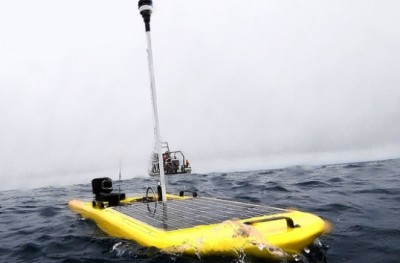Liquid Robotics has launched remote controlled robots, called Wave Gliders, which traverse across oceans and collect oceanographic data. They intend to make the data available to consumers on the web.
 Wave Gliders
Wave Gliders
The gliders would track all kinds of data related to oceans like wave heights, whale songs and ships present nearby. Liquid Robotics plan to sell their robots to research institutions, governments and energy companies. The wave glider consists of a floating section measuring 6 ft wide and 10 ft long made up of solar panels, battery and sensors. There is another similar glider attached to this glider, which is placed 23 ft below the float. The glider placed deep inside the ocean is attached with a rudder for navigation purposes.
Robert Hine, who invented the device, had originally built it for one of his friends who wanted to study whale songs. He began working on the glider in 2005, trying various electric engines without much success. He later came up with an approach of harnessing the energy from waves, similar to the design of a sailboat. The wings of the gliders tap energy from the up-down motion of the waves to propel the device forward at a speed of 1.5 miles per hour. The operators communicate waypoints to the robot through the satellite, then uses GPS signals to follow the programmed route. The gliders are free to float on the ocean and can be programmed to go anywhere. They are capable of recording ocean and air temperature, which would be useful in predicting storms. The data such as wave currents and wave heights can be useful for shippers in deciding the safest route for their ships. Oceanographers can monitor aquatic life with the help of the glider. To ease out the ship traffic at crowded areas like the Gulf of Mexico, the gliders could display information such as speed and destination of ships on maps.
Apart from Liquid Robotics, companies like iRobot and Teledyne Technologies are also sending their gliders to gather oceanographic data.